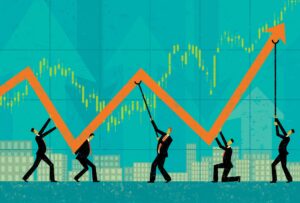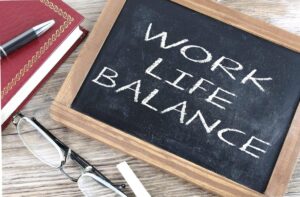The supply chain has emerged as a defining force in organizational performance—no longer relegated to a support function, but positioned as a central driver of competitive advantage, customer experience, and innovation. As global networks grow more interconnected and exposed to risk, the pressure on supply chain leadership intensifies. Executives must now juggle demands ranging from cost containment and on-time delivery to carbon reduction, digital transformation, and geopolitical risk mitigation—often simultaneously.
Against this backdrop, the industry faces a mounting talent crisis. A considerable share of experienced supply chain leaders is approaching retirement age, and the next generation is not yet fully equipped to step into these roles. Many younger professionals possess the technical proficiency but lack the broader strategic exposure, cross-functional fluency, and mentorship necessary to lead at scale.
This growing leadership gap threatens to undermine progress just as the supply chain’s role becomes more mission-critical. To stay ahead, companies cannot rely solely on lateral hiring or external recruitment; they must cultivate leadership from within. That requires moving beyond ad hoc promotions or isolated training efforts to embrace a structured, forward-looking system: a leadership pipeline.
This article examines why building a leadership pipeline is essential to sustaining supply chain excellence, shares real-world examples and evidence, and outlines practical strategies to develop leaders who are not only capable of managing complexity but also equipped to transform it into opportunity.
Why a Leadership Pipeline Matters
1. Continuity and Succession Planning
The graying of the supply chain workforce presents a looming risk for many organizations. According to the Association for Supply Chain Management (ASCM) 2023 Career and Salary Survey, 27% of supply chain professionals are over the age of 55, and a significant portion of these individuals will retire within the next decade. Compounding this issue is the fact that only 37% of organizations have a formal succession plan in place for supply chain leadership roles (Gartner, 2023).
Without proactive succession planning, organizations risk losing institutional knowledge, operational consistency, and customer trust. Disruptions can cascade quickly across global networks—from procurement and production to delivery and customer service.
Intel Corporation launched its Supply Chain Leadership Academy in the early 2010s, focused on global talent mobility, mentorship, and rotational leadership experiences. By 2019, the program resulted in a 90% internal promotion rate to director-level roles within its global supply chain organization, ensuring continuity and strengthening internal leadership mobility. Furthermore, when Boeing faced unexpected retirements in its procurement division in 2021, the company had to delay multiple supply contracts due to insufficient bench strength. This event pushed Boeing to partner with universities to build a talent funnel, but the gap in the interim cost them millions in delays and renegotiations.
2. Talent Retention and Engagement
In a talent-constrained market, employee retention is directly tied to development opportunities. High-potential employees—especially among Millennials and Gen Z—want more than a paycheck; they want purpose, growth, and a clear path forward.
A 2023 LinkedIn Learning report revealed that 94% of employees would stay longer at a company that invests in their career development. Additionally, Gen Z is 2.5x more likely to prioritize learning and advancement over compensation, according to a Deloitte Global Gen Z and Millennial Survey (2023). Companies that fail to provide such opportunities risk losing their future leaders to more progressive employers.
Unilever’s “Future Leaders Program” integrates global rotations, digital skill-building, and leadership mentorships across functions—including supply chain. Participants in the program have a 30% higher retention rate over five years compared to peers who join through traditional hiring paths. Moreover, a clear leadership pathway increases engagement. Gallup data (2022) shows that engaged employees are 23% more profitable and 18% more productive than their disengaged counterparts. Building a leadership pipeline creates a culture of trust and aspiration—where employees see a future for themselves in the company.
3. Innovation and Digital Transformation
Today’s supply chain leaders must be more than logistics experts—they must be technologists, data interpreters, and strategic visionaries. From integrating AI-driven demand forecasting to implementing blockchain for traceability, the Fourth Industrial Revolution (Industry 4.0) demands leaders who understand both the technical and human sides of transformation.
Yet, a 2023 Gartner report found that only 12% of organizations believe their current supply chain leadership is “very prepared” to lead digital transformation. Even worse, only 10% have a formal digital leadership upskilling plan in place. This represents a critical gap, especially as supply chains grow more complex and digitally interconnected.
Amazon’s supply chain is widely recognized for its agility and resilience. A big part of this success is due to its cross-functional leadership development tracks, which rotate high-potential employees across AI, procurement, robotics, and fulfillment centers. During the height of the COVID-19 pandemic, this investment paid off—Amazon was able to rapidly decentralize decision-making, reallocate resources in real-time, and maintain service levels when competitors struggled. Additionally, Maersk, the global shipping giant, has invested heavily in training its leadership on analytics and automation. As a result, it improved visibility across 300+ ports and saved $50 million annually through optimized container movements and real-time route adjustments.
4. Operational Excellence
Strong leadership translates directly to operational performance. Effective leaders align teams, anticipate bottlenecks, and drive cost efficiency across sourcing, manufacturing, and delivery.
According to a 2020 McKinsey & Company study, organizations that prioritize leadership development:
- Outperform peers by up to 20% in EBIT (earnings before interest and taxes)
- Achieve 15% higher customer satisfaction scores
- Reduce supply chain costs by 6–12% through leaner operations and better forecasting
These gains are not theoretical. A 2022 case study from Johnson & Johnson’s supply chain division demonstrated that leaders who received targeted development training improved their teams’ order fulfillment rates by 9%, reduced backorders by 12%, and increased cross-functional collaboration metrics by 23% within just one year.
Leadership effectiveness is a multiplier. One strategic hire or promotion at the right time can realign a failing supplier network, integrate sustainability into procurement, or implement a game-changing ERP system. Without a prepared bench of leaders, organizations are left vulnerable to inefficiencies, disruption, and stagnation.
Building the Pipeline: Key Strategies
Creating a resilient and future-ready leadership pipeline in the supply chain requires more than just identifying high-potential employees. It demands a comprehensive, multi-pronged strategy that blends talent analytics, experiential learning, inclusive leadership development, and long-term succession planning. Below are eight essential strategies that leading organizations use to cultivate tomorrow’s supply chain leaders.
1. Talent Identification and Leadership Assessment
Pinpointing future leaders starts with identifying employees who exhibit both technical excellence and leadership potential. While subject matter expertise is important, attributes such as emotional intelligence, decision-making under pressure, communication skills, adaptability, and influence across teams are equally critical.
Best Practices:
-
Use tools like 360-degree feedback, behavioral interviews, and scenario-based assessments to gather well-rounded input from peers, supervisors, and direct reports.
-
Integrate psychometric tools such as the Korn Ferry Leadership Architect™, Hogan Assessments, or SHL Leadership Suite to benchmark individuals against proven leadership competencies.
High-potential talent is not always high-performing in current roles. Some of the most effective future leaders emerge through strong learning agility and cross-functional versatility.
2. Structured Leadership Development Programs
Formal leadership development programs are the cornerstone of a robust pipeline. These programs should provide a mix of technical training, soft skill development, business acumen, and exposure to executive-level decision-making. Equally important is a curriculum rooted in real-world supply chain challenges.
Key Components:
-
Executive education in areas such as global logistics, sustainability, and digital transformation.
-
Leadership labs that simulate crisis scenarios like supplier disruptions, global tariffs, or inventory shortfalls.
-
Case-based learning from real industry examples.
Procter & Gamble’s “Supply Chain University” includes rotational assignments, classroom learning, and capstone projects. Participants report a 70% retention rate over 5 years, significantly above industry averages.
3. Job Rotation and Cross-Functional Exposure
Exposure to a variety of roles helps high-potential employees develop a holistic view of the supply chain ecosystem. This rotational approach deepens business acumen, encourages collaboration across silos, and fosters systems thinking—key attributes of effective supply chain leaders.
Implementation Ideas:
-
Design rotations across logistics, procurement, planning, customer operations, and sustainability.
-
Encourage exposure to finance, marketing, or IT to bridge business functions and align strategies.
-
Include international rotations where possible to build cultural agility.
Cisco’s Supply Chain Leadership Program rotates managers through procurement, digital transformation, and finance. Alumni are more likely to ascend to senior leadership roles due to their multidisciplinary understanding.
4. Stretch Assignments and Special Projects
Leaders are often forged under pressure. Assigning employees to complex, ambiguous, or high-stakes projects accelerates growth and reveals hidden strengths.
Examples of Stretch Assignments:
-
Leading a greenfield manufacturing site launch.
-
Heading cross-border supplier negotiations.
-
Managing a product recall or logistics disruption.
These assignments develop resilience, accountability, stakeholder management, and the ability to execute in dynamic environments.
5. Mentorship and Executive Coaching
Mentorship and coaching are invaluable in helping emerging leaders gain confidence, clarify goals, and refine interpersonal skills. Mentorship provides narrative guidance—insights from seasoned professionals who have navigated similar paths. Coaching offers a structured space for behavioral change and leadership mastery.
The International Coach Federation (ICF) reports that organizations using coaching see an average 7x return on investment, through improved productivity, retention, and leadership performance.
Tip: Pair mentors with mentees across departments to promote cross-functional learning and diversity of thought.
6. Performance Reviews Aligned with Leadership Metrics
Traditional performance reviews often emphasize short-term results. However, building a leadership pipeline requires evaluating potential, not just current performance.
Recommended Metrics:
-
Strategic vision and decision-making under ambiguity.
-
Influence and collaboration across teams.
-
Ability to lead change and drive innovation.
-
Digital literacy and technological acumen.
Tip: Introduce leadership scorecards with defined behavioral indicators, and link them to development goals and promotion pathways.
7. Succession Planning
Succession planning ensures leadership continuity and reduces risk. It requires more than naming a “next-in-line”—it means proactively building readiness pathways for each key role, including leadership gaps two to three levels down.
Tactical Steps:
-
Identify critical roles and assess leadership pipeline strength by role.
-
Create individual development plans for successors.
-
Conduct quarterly talent calibration sessions with HR and business leaders.
DHL implemented AI-driven talent analytics to manage succession planning for 200 global supply chain leaders. The initiative led to a 30% drop in external hiring costs and helped maintain stability through senior-level transitions.
8. Embracing Diversity and Inclusion
Leadership pipelines must reflect the diversity of the global workforce and customer base. Diverse leadership teams are not just equitable—they perform better. According to McKinsey, companies in the top quartile for gender diversity on executive teams are 25% more likely to have above-average profitability.
Key Actions:
-
Eliminate bias in promotion and talent review processes.
-
Establish ERGs (Employee Resource Groups) to support underrepresented groups.
-
Track pipeline diversity metrics and set tangible inclusion targets.
ASCM’s “Girls Who Supply Chain” program offers mentorship, scholarships, and early-career networking to women entering the field—fostering long-term equity and representation in leadership roles.
Conclusion: Tomorrow’s Supply Chain Depends on Today’s Leadership Investments
The modern supply chain is at a pivotal crossroads. As globalization intensifies and disruptions become the norm rather than the exception—from geopolitical conflicts and inflationary pressures to climate-related crises and cyber threats—the demands on supply chain leadership have never been greater. Meanwhile, technology is rewriting the rules of the game. Artificial intelligence, automation, and real-time data analytics are transforming logistics, procurement, and inventory management at breakneck speed.
In this complex and volatile landscape, agility, foresight, and innovation are not optional—they are essential. The next generation of supply chain leaders must be multidimensional: strategic thinkers, digital innovators, cross-functional collaborators, and champions of resilience and sustainability. They must be capable of leading diverse, distributed teams and making decisions quickly amid ambiguity.
But such leaders don’t emerge by chance—they are cultivated with intention.
Organizations that proactively invest in identifying and nurturing talent through structured leadership pipelines position themselves for long-term success. They build internal capacity to weather disruptions, respond to market shifts with speed, and innovate ahead of the curve. Moreover, they create cultures where employees feel empowered, valued, and committed—fueling engagement, reducing turnover, and attracting top-tier talent.
Building a leadership pipeline is not merely a human resources initiative—it is a core business strategy that directly impacts competitiveness, operational performance, and financial outcomes.
As the global supply chain continues to evolve, one truth remains constant: The strength of tomorrow’s supply chain lies in the leaders we develop today. Organizations that recognize this—and act on it—will not only survive the future. They will shape it.
Let’s Connect
The Perfect Planner Team is here if you have any questions about Building a Robust Leadership Pipeline in the Supply Chain, and we offer a free consultation service. If you would like to connect with us on this article or any other topic, please message us on LinkedIn, shoot us an email at info@perfectplanner.io, visit our website at www.perfectplanner.io, or give us a call at 423.458.2979.
Author: Ed Danielov
Publication Date: May 1, 2025
© Copyright 2025 Perfect Planner LLC. All rights reserved.
References
- Association for Supply Chain Management (ASCM). (2023). Supply Chain Salary and Career Report. https://www.ascm.org/research-and-data/salary-career-report/
- Gartner. (2023). Future of Supply Chain: Succession Planning and Digital Transformation.https://www.gartner.com/en/newsroom/press-releases/2023-05-16-gartner-survey-finds-only-14-percent-of-supply-chain-leaders-are-prepared-for-the-future
- LinkedIn Learning. (2023). 2023 Workplace Learning Report.
https://learning.linkedin.com/resources/workplace-learning-report
- Deloitte. (2023). Global 2023 Gen Z and Millennial Survey. ttps://www2.deloitte.com/global/en/pages/about-deloitte/articles/genzmillennialsurvey.html
- Gallup. (2022). State of the Global Workplace. https://www.gallup.com/workplace/349484/state-of-the-global-workplace-2022-report.aspx
- McKinsey & Company. (2020). Why Leadership Development Programs Fail—and What to Do About It. https://www.mckinsey.com/capabilities/people-and-organizational-performance/our-insights/why-leadership-development-programs-fail
- Maersk. (2023). Sustainability and Digitalization in Global Logistics Report. https://www.maersk.com/news/articles/2023/03/09/transforming-logistics-through-digitalisation
- Amazon. (2021). 2020 Supply Chain Innovation Report. https://www.aboutamazon.com/news/operations/inside-amazons-supply-chain-innovation
- Intel. (2019). Global Supply Chain Academy Case Study.
https://www.intel.com/content/www/us/en/supply-chain/overview.html
- Johnson & Johnson. (2022). Leadership Development Impact Report.
https://www.jnj.com/our-company/employee-leadership-development






